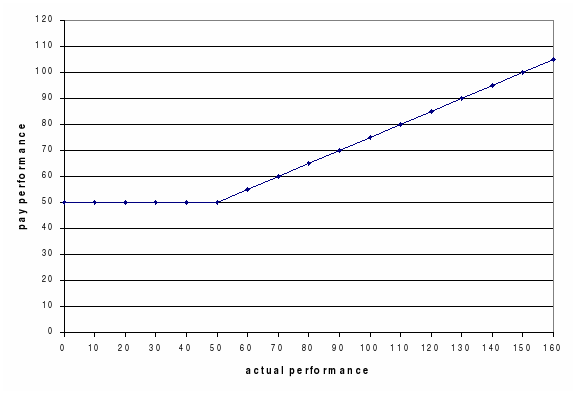
The concept of schemes for incentive payments is a very controversial one. The first thing to make clear is that financial incentives and motivation are diametrically opposed to each other. Frederick Herzberg in particular would, in his time, be aghast at the mention of the two concepts in the same breath. But this is the subject of another Topic (see below).
In the Topic “Scientific Management” you will read about the pioneers of this approach the management. The way to get more work out of people was to give them some incentive which could range from the negative “stick” method to the positive “carrot” incentive. The “stick” drives people to work more quickly because the must, while the “carrot” attracts them to speed up to earn rewards. In a nutshell, better output is achieved because people are made to work better while psychological motivation produces better output because people want to achieve. Both methods are largely effective and successful but for different reasons.
In order for financial incentive schemes to be effective they must be based on targets. Targets, usually, are in terms of output in numerical form reling on the jobs being work measured.
A typical scheme is the piecework method in which workers are paid “per unit produced”. The format of the system is chosen (described later). A standard time per unit is set on the job using a suitable choice of work measurement. The output is linked to the (usually) variable wages. The proposal is put to the workforce and unions if relevant for their discussion and agreement.
There is a minimum safeguard for the worker, or basic pay rate, usually set at a 50 BS performance. Workers are never paid less than this amount. Above the 50 BS a bonus proportional to the actual performance is paid. 100 BS level is known as the “incentive” performance and 75 BS,is “normal” performance
A basic scheme is as described above with basic wage is paid up to an actual performance of 50 BS. Above this a bonus is paid in direct proportion to the actual performance on a one-for-one basic. In all cases the pay performance scale is geared to actual currency of the country, pro rata.
There are many different forms of financial incentives. One of the most basic schemes is the “50 + a half” which is similar to the above but pay performance bonus is at a rate of only half of the actual performance. The Figure below illustrates the 50 + 1/2 scheme. For example, if the worker produces 90 actual performance, he/she is paid the wage equivalent to a 70 performance i.e. half of the bonus part going to the worker and half to the company.
Other variants include the Taylor differential piece-rate scheme, which is similar to the above but has a step or “jump” in the payment as an extra inducement to increase output. Another group uses curved schemes, such as the Rowan “hyperbolic” payment scheme and the Barth Variable Sharing scheme.
In the 1960’s the Philips organization, tired of the administration involved in payment-by-results, devised a method of individual fixed bonuses in its Premium Payment Plan (PPP). Basically, workers contracted with the company to work at a certain rate on average for an equivalent fixed bonus. Workers who defaulted on the contract were warned that in order to maintain their individual bonuses they must improve. Employees could work their way up to higher levels of bonus through contracting to work at correspondingly higher output levels as they became more experienced.

